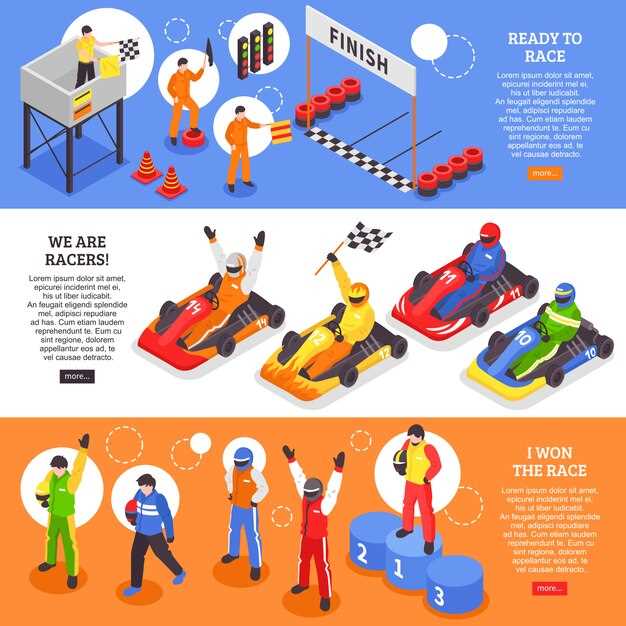
When it comes to motorsport, there are various types of racing that attract enthusiasts from different backgrounds. Two of the most popular forms are rally racing and circuit racing. While both disciplines feature high-speed competition and skilled drivers, they differ significantly in their approach, surface, and overall experience. Understanding these differences is essential for fans and participants alike.
Rally racing typically takes place on a variety of unpaved surfaces, including gravel, mud, and snow, pushing drivers to navigate challenging terrain and unpredictable conditions. Competitors must demonstrate not only speed but also exceptional control and adaptability as they tackle changing environments. In contrast, circuit racing occurs on closed, paved tracks designed for high-speed performance and technical precision, allowing drivers to focus on mastering the course layout.
The contrasting environments of these two racing types also influence vehicle design and setup. Rally cars are built for versatility and endurance, equipped to handle a wide range of conditions and surfaces. Circuit racing vehicles, on the other hand, prioritize aerodynamics and grip, optimized for the smooth, consistent asphalt of racetracks. These fundamental differences create unique challenges for drivers and teams, ultimately shaping the very essence of each motorsport.
Surface Variations: Gravel, Asphalt, and Beyond

Surface types play a crucial role in differentiating rally racing from circuit racing. Each surface presents unique challenges that impact the performance of vehicles and the strategies employed by drivers.
In rally racing, gravel is a common surface type that necessitates a different approach compared to traditional asphalt tracks. Gravel surfaces often feature loose stones and varying levels of traction, requiring drivers to master techniques like drifting and throttle control to maintain speed while navigating tight corners. The unpredictability of gravel can lead to a dynamic racing experience, where drivers must adapt quickly to changing conditions.
Asphalt, on the other hand, is predominant in circuit racing. This hard surface provides a consistent grip and smoother ride, allowing for higher speeds and more precise cornering. Drivers in circuit racing rely on their ability to maintain optimal racing lines and maximize tire performance, as the grip offered by asphalt allows for aggressive acceleration and braking.
Beyond gravel and asphalt, there are other surface variations encountered in both racing disciplines. For example, rally events may include snow or mud sections, which further challenge drivers’ skills and vehicle capabilities. These surfaces can significantly alter handling dynamics, requiring specialized setups and tire choices.
In summary, the differences in surface types between rally and circuit racing fundamentally influence driving techniques, vehicle performance, and overall race strategy. Understanding these variations is essential for both competitors and fans of motorsport.
Types of Racing: Comparing Speed and Skill Requirements
Racing can be categorized into various types, each demanding distinct abilities and speed requirements from competitors. Rally racing and circuit racing are two prominent genres that highlight these differences. Understanding the nuances between them can help enthusiasts appreciate the unique challenges each presents.
In rally racing, drivers compete on a mix of surfaces–such as gravel, mud, and tarmac–often on closed-off public roads. This type of racing emphasizes adaptability and precision, as drivers must navigate unpredictable terrains and conditions. The skill of reading the terrain and making quick decisions based on the environment is crucial. Speed is vital, but maintaining control through challenging sections often requires significant expertise, which can be more demanding than simply pushing the pedal to the metal.
On the other hand, circuit racing takes place on a defined track with a controlled environment, featuring smooth asphalt and predictable corners. This type of racing focuses heavily on mastering a specific course and achieving the fastest lap times. Drivers need to demonstrate exceptional consistency, technical knowledge, and the ability to perfect racing lines to maximize speed. Unlike rally racing, where external conditions play a significant role, circuit racing relies more on vehicle setup and driver skill in maintaining high speeds over repeated laps.
Ultimately, while both types of racing require high speed and expertise, rally racing places a stronger emphasis on versatility in unpredictable conditions, whereas circuit racing prioritizes technical consistency and the ability to optimize performance on a set course. Each type appeals to different skill sets, making them both challenging and thrilling in their own right.
Vehicle Specifications: Rally Cars vs Circuit Racers

Rally cars and circuit racers are designed to meet the specific demands of their respective racing types, resulting in significant differences in vehicle specifications. Rally cars, built for versatility, excel in a variety of terrains including gravel, mud, snow, and tarmac. These vehicles typically feature a robust suspension system that allows for substantial travel to absorb shocks from uneven surfaces. Additionally, rally cars have a lightweight structure, often constructed with advanced materials such as carbon fiber or aluminum, to enhance agility and speed.
In contrast, circuit racers are engineered for precision and performance on smooth asphalt surfaces. These cars possess a stiff chassis with limited suspension travel, enabling optimal handling and cornering capabilities during races. Aerodynamics play a crucial role in circuit racing, prompting circuit cars to include elements like spoilers and diffusers, which help to increase downforce and stabilize the vehicle at high speeds. Furthermore, the engine specifications of circuit racers are typically tuned for higher power output, focusing on acceleration and sustained high speeds over the longer distances of track circuits.
Both types of racing vehicles also have distinctive tire designs suited to their environments. Rally cars utilize all-terrain tires with a wider tread pattern to provide traction across varied surfaces. On the other hand, circuit racers opt for slick tires with minimal tread, allowing for maximum grip on dry tracks. Engine performance is another vital aspect, with rally cars often featuring turbocharged engines that provide versatility in power delivery, while circuit racers may utilize naturally aspirated engines or highly-tuned turbo engines focused on peak output.
Overall, while both rally cars and circuit racers are built for speed and performance, their specifications reflect the differing challenges and strategies encountered in their respective racing disciplines.
